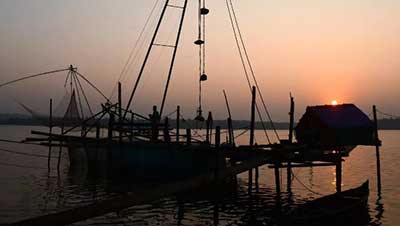Date: 29/04/2023
Relevance: GS-3: Conservation, environmental pollution and degradation, environmental impact assessment.
Key Phrases: CAG, Koli Community, Tech-Enabled Toolkit, Blue Economy, Performance Audit, Community Participation, World Bank, Sustainability.
Context:
- The Comptroller and Auditor General's (CAG) audit of India's coastline has revealed some concerning realities that could negatively impact the blue economy.
Introduction
- The Indian coastline spans 7,516 km and is home to numerous
coastal communities that rely on the oceans for their livelihood.
- However, the rapid growth of industries such as fisheries, maritime transportation, and renewable energy has put immense pressure on these fragile ecosystems.
- Moreover, the looming threat of climate change and rising sea levels is further exacerbating these challenges.
- In light of these issues, the Comptroller and Auditor General (CAG) of India conducted a performance audit on the conservation of coastal ecosystems in India, with a specific focus on the blue economy.
Challenges Facing India's Coastal Ecosystems
- One of the significant challenges facing India's coastal
ecosystems is overfishing.
- Thirty-four percent of global fish stocks are currently overfished, and another 60 percent are fished at their maximum sustainable level.
- This puts immense pressure on marine biodiversity and threatens
the livelihoods of coastal communities.
- Additionally, the reclamation of land from the sea for infrastructure development is a growing concern.
- The upcoming coastal road, for instance, is built on land reclaimed from the sea, and the long-term impact of the reclamation on the availability of fish stock hasn't been assessed.
- Furthermore, ocean ecosystems are under threat from many directions, including pollution, habitat destruction, and invasive species.
The Role of Blue Economy in Promoting Sustainability
- The Blue economy encompasses a wide range of sectors, including
fisheries, aquaculture, maritime transportation, and renewable energy.
- As such, it is a complex and labyrinthine landscape to navigate in audits. However, it holds tremendous value.
- The World Bank estimates the economic potential of ocean resources at $24 trillion, providing livelihoods to over three billion people.
- Therefore, it is essential to address critical issues such as marine biodiversity conservation, gender equity, and effective coastal spatial planning to realize the potential of the blue economy.
- Spatial planning is a crucial aspect of promoting sustainability in the blue economy. The coastline can be divided into thousands of bite-sized squares, each demarcating an ecologically sensitive zone.
- Management plans specify the permissible activities in each grid, including fisheries, tourism, and infrastructure projects. Compliance with these plans is critical to ensure the sustainable use of coastal resources.
- The performance audit conducted by the CAG of India examined the
extent of compliance with management plans for grids along 6,100 km of the
coastline.
- Using a technology-enabled toolkit the auditors were able to assess the level of compliance with the plans and identify areas of concern.
- This toolkit is not just an audit resource but can be adapted for use by the government for oversight of compliance with coastal management plans.
The Need for Community Participation in Conservation
- One of the critical recommendations of the performance audit is
the need for community participation in conservation efforts.
- Coastal communities are among the most affected by changes in the ecosystem, and their involvement is essential to ensure the sustainable use of coastal resources.
- The use of the technology-enabled toolkit can be extended to
engage communities in conservation efforts.
- For instance, the same tools can be put together in an app that allows communities to partner with the government in conservation efforts.
- The Koli community in Mumbai, for instance, can be drafted to
monitor activities in grid number 75, which includes the Worli Koliwada.
- Similarly, fishing communities along the coast can join hands to protect the waters.
Conclusion
- India's coastline and the ecosystems it supports face a myriad of
challenges, including overfishing, pollution, and habitat destruction.
- The blue economy holds immense economic potential, but its sustainable development requires careful planning, community participation, and compliance with management plans.
- The use of technology-enabled toolkits, such as the one employed by the CAG of India, can aid in assessing compliance with management plans and engaging communities in conservation efforts.
- Ultimately, a concerted effort by all stakeholders is needed to ensure the sustainable use of India's coastal resources and promote the growth of the blue economy.
Source: The Hindu BL
Mains Question:
Q. What measures should be taken to ensure the sustainable development of the blue economy in India while also protecting the fragile coastal ecosystems? Discuss with relevant examples. (150 words).






















